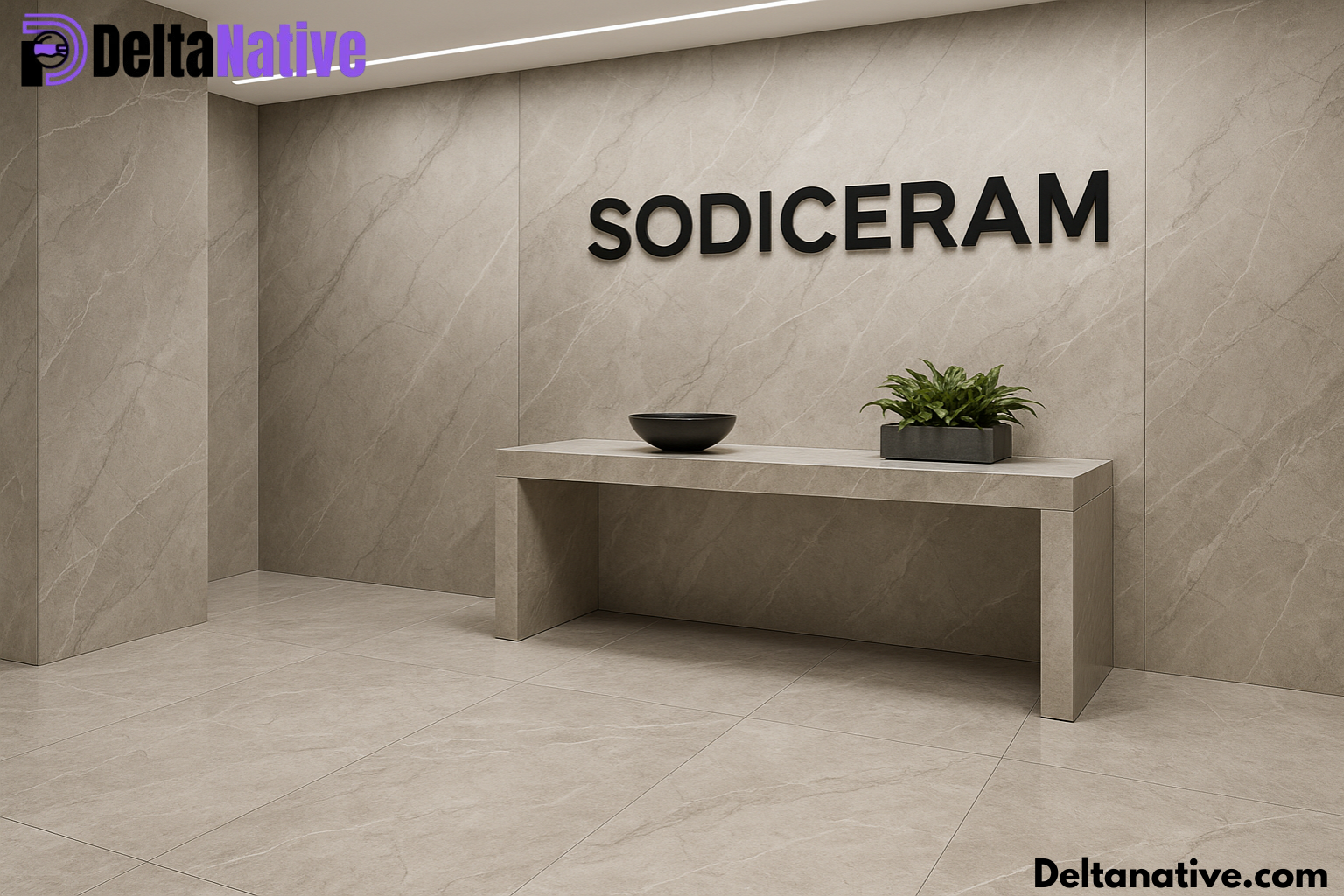Introduction
Ceramics have been part of human civilization for thousands of years, valued for their durability, beauty, and versatility. From ancient pottery to modern building materials, they’ve evolved to meet the needs of each era. Sodiceram represents the latest stage in this evolution—a technologically enhanced ceramic material designed to combine the timeless qualities of traditional ceramics with cutting-edge performance characteristics.
Engineered for both aesthetic appeal and industrial resilience, sodiceram is now being adopted in applications ranging from high-traffic commercial flooring to extreme-condition industrial components. Its strength, low maintenance requirements, and design flexibility make it a standout choice for architects, engineers, and designers alike.
What Exactly Is Sodiceram?
Sodiceram is an advanced ceramic product developed through precise control of raw material composition and firing conditions. Its formulation often incorporates:
- Natural Clays and Kaolin: The base material providing structure and plasticity.
- Mineral Oxides: Such as alumina or silica to enhance hardness and thermal performance.
- Sodium Compounds: Which can improve vitrification, density, and surface finish.
Why It’s Different
Unlike many conventional ceramics, sodiceram undergoes specialized high-temperature sintering and pressing techniques that create a dense, non-porous body. This makes it less prone to water absorption, staining, or cracking—key factors in its longevity.
Core Properties That Set Sodiceram Apart
Sodiceram’s appeal comes from its multi-dimensional performance advantages:
- Exceptional Durability: Withstands heavy foot traffic, impact, and abrasion without visible wear.
- Thermal Stability: Maintains structural integrity in both extreme heat and cold, suitable for industrial furnaces or outdoor facades.
- Chemical Resistance: Holds up against oils, mild acids, and cleaning agents—ideal for labs and commercial kitchens.
- Design Flexibility: Manufactured in various colors, patterns, and textures, from ultra-modern gloss to rustic matte finishes.
- Hygienic Surface: Its low porosity inhibits bacterial growth and makes it easy to clean.
Also Read: Markiseteppe: The Complete Guide to Stylish and Functional Outdoor Living
Real-World Applications of Sodiceram
Architecture & Interior Design
- Commercial Flooring: Airports, shopping malls, hospitals—spaces that demand both beauty and resilience.
- Wall Cladding: Both indoor and outdoor applications benefit from its weather resistance and visual impact.
- Kitchens and Bathrooms: Countertops, backsplashes, and wet areas where hygiene and water resistance are priorities.
Industrial & Engineering Use
- Heat-Resistant Panels: Furnace linings, kiln shelves, and thermal shields in manufacturing plants.
- Chemical Environments: Lab countertops and containment areas for handling reactive substances.
- Electrical Insulation: Non-conductive sodiceram components used in electronic assembly and energy systems.
Creative and Artistic Applications
- Sculpture and Installations: Artists use sodiceram for its textural possibilities and weather-resistant qualities in public art.
- Custom Design Projects: Bespoke furniture inlays, wall murals, and façade patterns.
Step-by-Step Guide: Implementing Sodiceram in Your Project
Step 1 – Define Purpose and Requirements
Identify whether you need sodiceram for decorative purposes, structural performance, or industrial resilience.
Step 2 – Choose the Right Form Factor
- Tiles for flooring or wall cladding.
- Large slabs for countertops or facades.
- Custom-fabricated shapes for industrial parts.
Step 3 – Prepare the Substrate
Ensure a clean, level, and stable base to avoid stress points that can damage the ceramic.
Step 4 – Installation
Use adhesives, mortar, or mechanical fixing systems suited to the application environment. For high-heat settings, choose thermal-resistant adhesives.
Step 5 – Finishing & Jointing
Select grout or joint materials that complement sodiceram’s performance—e.g., epoxy grout for chemical resistance.
Step 6 – Maintenance
Routine cleaning with mild detergents; avoid abrasive pads to preserve the finish. No frequent sealing is required due to low porosity.
Comparative Advantages Over Other Materials
| Feature | Sodiceram | Porcelain Tile | Natural Stone |
|---|---|---|---|
| Water Absorption | Very Low | Low | Variable |
| Heat Resistance | Excellent | Good | Good |
| Chemical Resistance | High | Medium-High | Low-Medium |
| Maintenance | Easy | Moderate | Requires Sealing |
| Custom Design Options | Extensive | Moderate | Limited by Nature |
This comparison highlights how sodiceram bridges the gap between industrial-grade performance and design versatility better than many traditional materials.
Sustainability and Environmental Benefits
Modern sodiceram production often incorporates eco-conscious manufacturing practices:
- Lower Energy Kilns: Using advanced firing technologies to reduce energy use.
- Recycled Inputs: Integrating waste ceramics or industrial by-products into the mix.
- Longevity: Its extended service life reduces the frequency of replacements, cutting down waste.
For architects aiming for LEED certification or other sustainability goals, sodiceram’s eco-friendly potential makes it an appealing choice.
Conclusion
Sodiceram is more than just another ceramic option—it’s an engineered solution that meets the demands of modern architecture, design, and industry. By offering durability, versatility, and sustainability, it’s quickly becoming a preferred material for projects where performance and aesthetics must work hand-in-hand.
Whether you’re designing a high-traffic public space, upgrading an industrial facility, or crafting a work of art, sodiceram offers the balance of beauty and toughness needed for lasting success.
FAQs
1. How does sodiceram differ from porcelain?
While both are dense ceramics, sodiceram often includes specialized compounds and processes that improve strength, chemical resistance, and design options.
2. Can sodiceram be used outdoors year-round?
Yes—its low water absorption and thermal stability make it ideal for all-weather applications.
3. Is sodiceram safe for food-contact surfaces?
Many sodiceram products are non-toxic and food-safe, but always confirm with the manufacturer for specific certifications.
4. What’s the lifespan of sodiceram in high-traffic areas?
With proper installation and maintenance, sodiceram can last decades without significant wear.
5. Can sodiceram be recycled at the end of its life?
Yes—waste sodiceram can often be crushed and reused in new ceramic production or construction aggregates.

